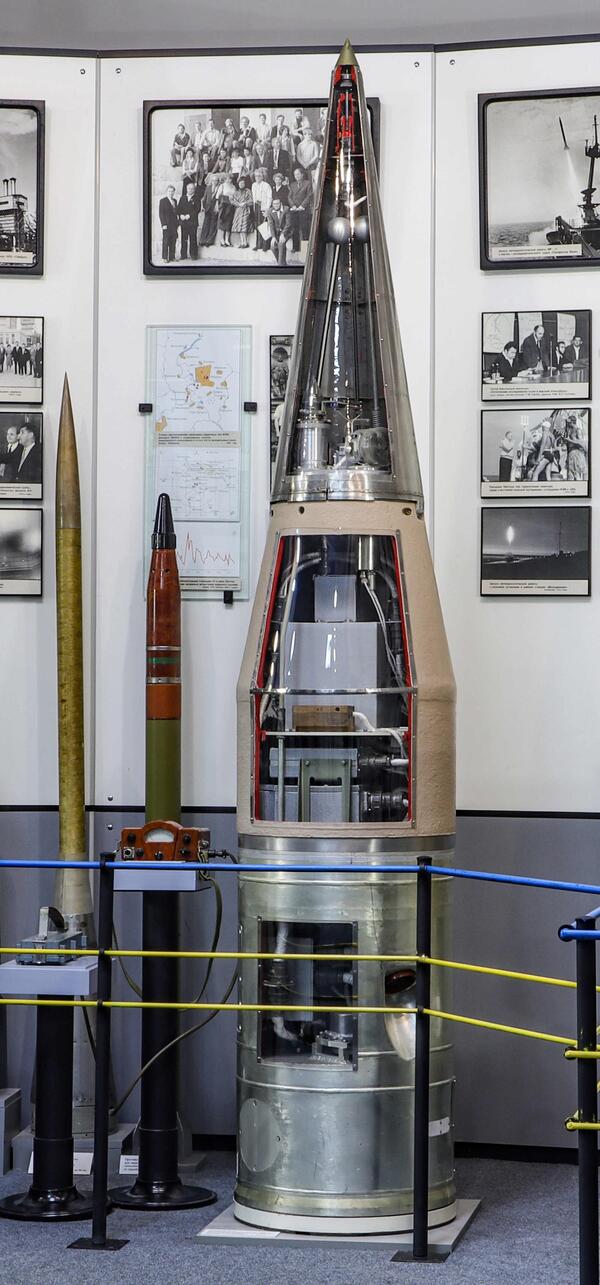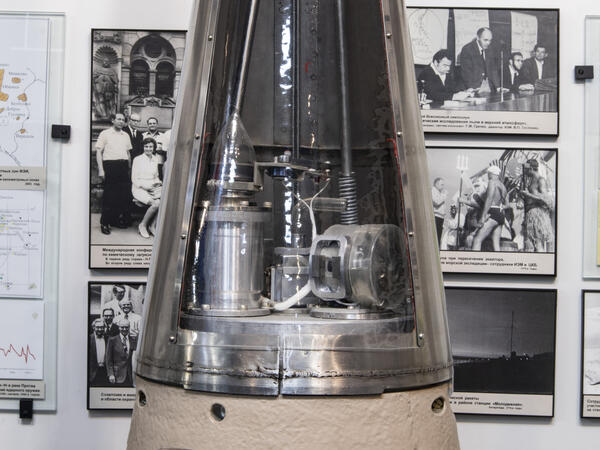MR-12 geophysical rockets are used to study the upper layer of the earth’s atmosphere. The number “12” refers to the altitude at which the rocket is designed to fly — 120 km, although it can go much higher. The steel flaps that covered the instruments in the rocket head are partially cut out and replaced by plexiglass in the museum’s exhibit. This allows the complex structure of the instrumentation to be clearly seen.
The missile’s trajectory was monitored using radar stations. All scientific information from the meteorological rocket was transmitted continuously by a special antenna. The average flight time of the rocket was 6–7 minutes. The rocket was launched from a special launch pad. Rockets were also launched from the research vessels Professor Zubov and Professor Wiese. Launching from the ships made it possible to take readings of the rocket anywhere in the world’s oceans so that data could be better studied in different latitudes of the Earth.
In January 1966, the first launch of the MR-12 meteorological rocket took place on Heiss Island, Franz Josef Land archipelago. The rocket station at the “Druzhnaya” observatory is the northernmost on earth and the most interesting for scientific research; the Earth’s magnetic field lines converge there.
The missile’s trajectory was monitored using radar stations. All scientific information from the meteorological rocket was transmitted continuously by a special antenna. The average flight time of the rocket was 6–7 minutes. The rocket was launched from a special launch pad. Rockets were also launched from the research vessels Professor Zubov and Professor Wiese. Launching from the ships made it possible to take readings of the rocket anywhere in the world’s oceans so that data could be better studied in different latitudes of the Earth.
In January 1966, the first launch of the MR-12 meteorological rocket took place on Heiss Island, Franz Josef Land archipelago. The rocket station at the “Druzhnaya” observatory is the northernmost on earth and the most interesting for scientific research; the Earth’s magnetic field lines converge there.





